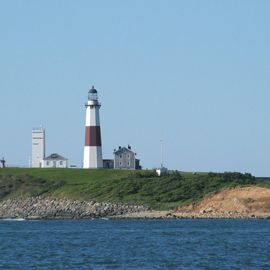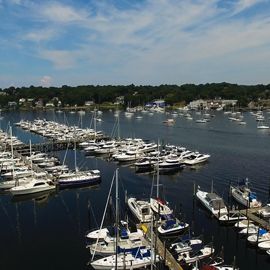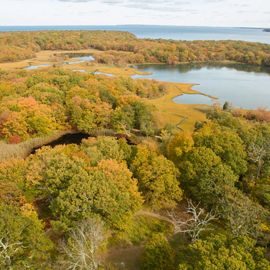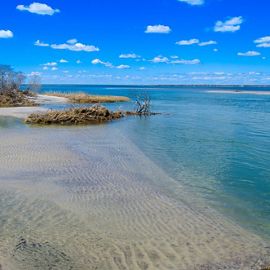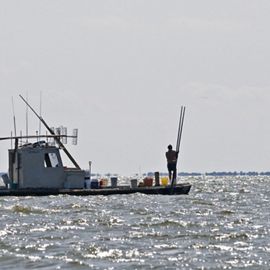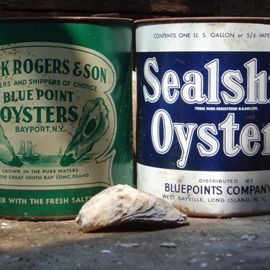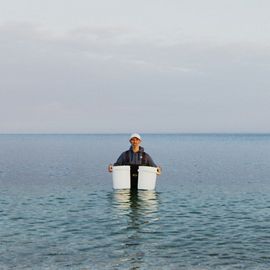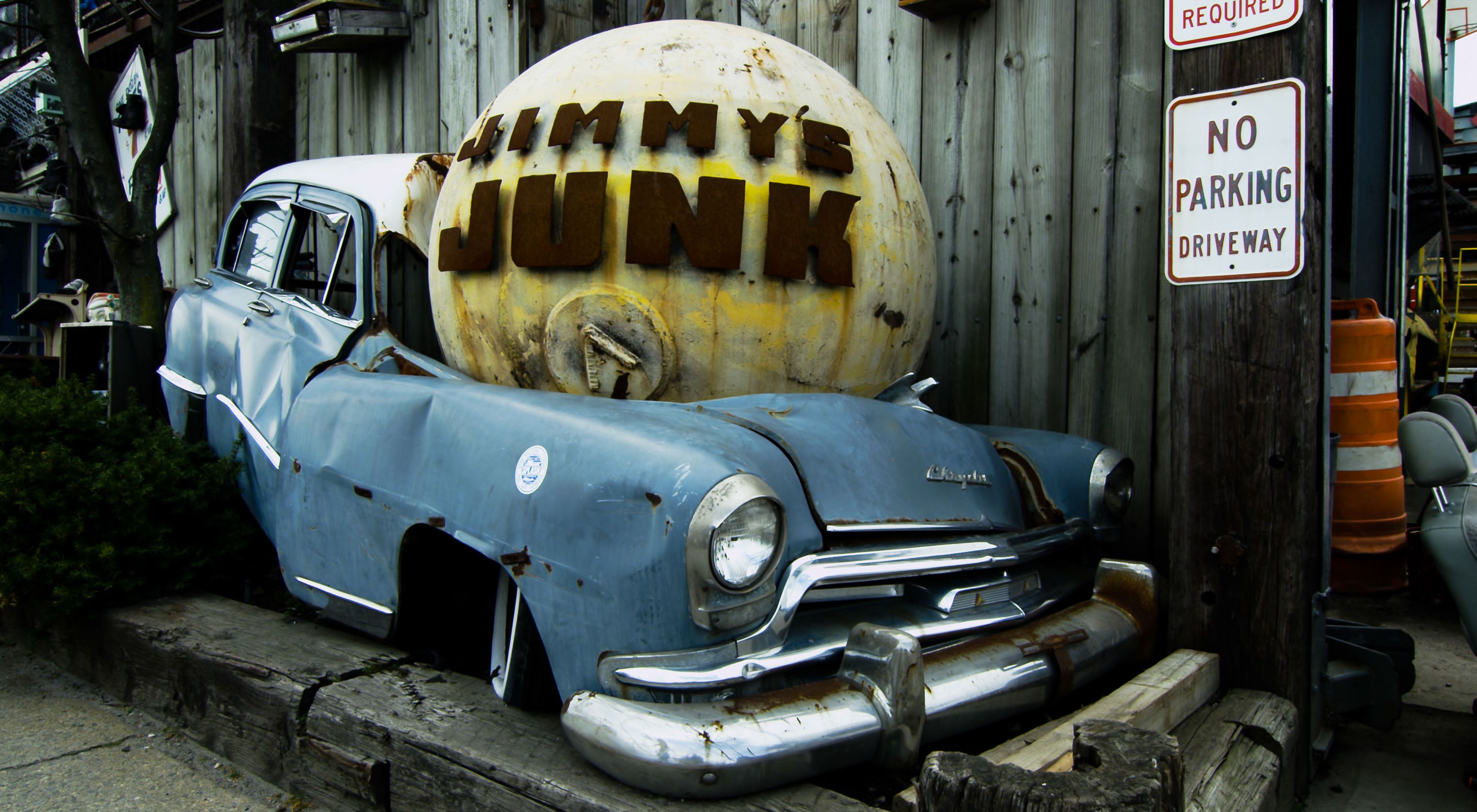The Wetlands Have Deteriorated
Wetlands were once thought of as wastelands. It was believed that salt marshes could absorb unlimited pollutants. Thanks to a groundbreaking study on the impacts of nitrogen on salt marshes, we now know that when salt marshes are constantly bathed in high nitrogen waters, they suffer. Because they invest less in making roots that give them strength, pieces break or calve off. They drown in the face of sea level rise. And people lose the many values that salt marshes provide. Deterioration of salt marshes in this way poses a serious long-term threat to the highly developed shoreline communities in southwest Nassau County.
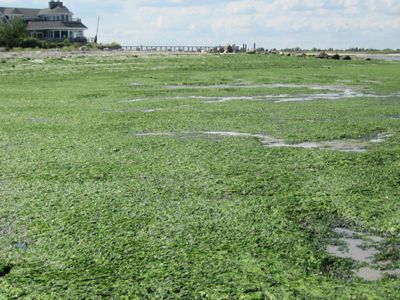
Seaweed is Reacting
The green seaweed shown piled up on the beach at Point Lookout is called Ulva. Ulva growth is fueled by nitrogen pollution. Stony Brook University studies show that when exposed to the sewage outflow from Bay Park sewage treatment plant, Ulva growth accelerates roughly four times compared to ocean or inlet waters.
There is a Sting in the Air
When Ulva dies and decays underwater it uses up oxygen, creating "dead zones." When Ulva that has piled up along the shore decays it emits hydrogen sulfide gas which smells like rotten eggs. Even low levels of this gas are disruptive to quality of life and the local economy in nearby communities, and high levels of hydrogen sulfide gas can have human health impacts, such as headaches, nausea, and difficulty breathing. Residents of Point Lookout commonly complain of noxious odors originating from decaying algae.

Sometimes the Solutions are Very Obvious
The Bay Park Sewage Treatment Plant discharges more than 50 million gallons of treated sewage into the environmentally sensitive western bays every day. That's enough to flood 10 acres of land with more than 16 feet of sewage effluent every day. Studies have conclusively shown serious negative environmental consequences that violate state and federal clean water standards. In the weeks and months after Superstorm Sandy, 2.2 billion gallons of raw and partially treated sewage flowed from the damaged plant into the bay, right next to very densely populated coastal communities. Since Sandy the solution has been obvious. Fortify and modernize the treatment plant at Bay Park and make it a regional plant, allowing the decommissioning of four other aging and storm-vulnerable sewage treatment plants. Improve the level of treatment to remove nitrogen, and relocate the outfall several miles out to the ocean. Financing has been sought but not yet secured for implementation.
Explore Local Stories About Water Quality
